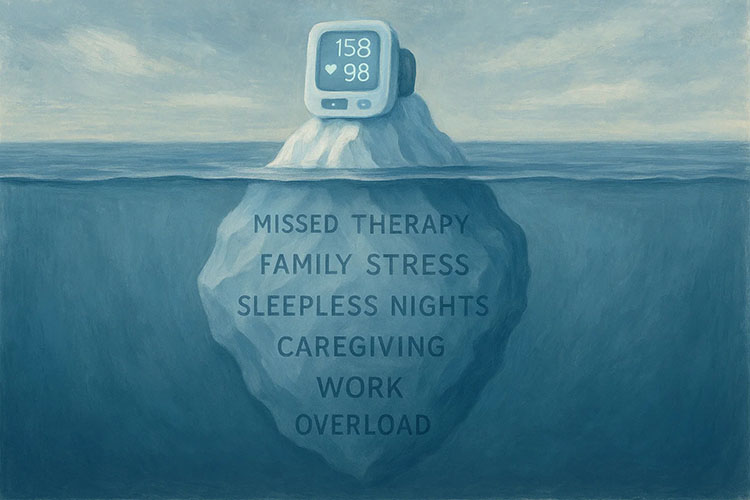
A study done by Health Services Research noted that the average length of visit between a Primary Care Physician and their Medicare aged patient is 15.7 minutes. Statistically, that means a doctor will see less than 4 patients an hour. This does not include dictation of notes, delegating duties regarding prescriptions, and other duties.
For doctors who are experiencing burnout, or practices that are seeking to serve more patients, how can you find more time in a doctor’s schedule? Reducing the time with patients during an office visit is not the answer.
Time with patients is important and has been shown to improve outcomes. Likewise, RPM (remote patient monitoring) has been shown to improve outcomes. It also decreases hospital readmissions by 72% and takes far less time than office visits. Patients are more engaged, and there is actually more communication occurring, more data is provided.
RPM takes daily vital readings of a patient with a chronic health issue, and securely transmit that information to a doctor’s portal for review. Often, other medical professionals will monitor the daily readings, with the primary care physician reviewing month-long readings. But, any trends, spikes or anomalies are immediately reported to the physician to provide an urgent response.
Many physicians can review 60 patients’ records within one hour a month. To have an office visit with each of those patients would take an average of 15 hours for 60 visits. Patients, also, prefer fewer office visits, due to the cost of time and travel to get to a doctor’s office.
The recent pandemic has accelerated the growth of digital healthcare services, including RPM. CMS has provided more CPT codes for better reimbursements for remote and digital healthcare services. Although working from home is not sustainable for most in the medical industry, RPM has made it possible for physicians across the country to monitor and treat patients from anywhere, at any time.
RPM is not the only trend disrupting the healthcare marketplace. Well-known brands like Walgreens Healthcare Clinics, Walmart Care Clinics, CVS Minute Clinics, and Target Clinics are disrupting the status quo.
According to survey data from Press Ganey, a healthcare experience leader, 66% of 1,000 respondents stated these national brands pose a significant threat to provider institutions that aren’t modernizing their businesses.
RPM has been shown to have greater patient retention. Losing a patient can be expensive for your practice. According to Patient Engagement website, 30% of patients have left a doctor’s office because they believed the wait time was too long. The cost to reacquire that patient or procuring a new patient can be very costly.
When healthcare providers decrease wait times, they can give more time to patients who need immediate attention. They increase productivity, patient satisfaction and generate greater reimbursements.
Patients who can stay connected to their physicians through RPM are more likely to follow their prescribed treatment plans. According to recent studies by Mayo Clinic, 72.5% of more than 7,000 participating patients complied with their care plan tasks. One area where this became clear was with No-Show appointments.
In addition to reducing revenues, No-Show appointments waste staff time, create artificial access problems, and adversely affect patient care. Patients connected through RPM were far less likely to be a No-Show when they actually had a doctor’s office visit.
Because RPM is often connected to telehealth in research studies, the actual percentage reduction of No-Shows related only to RPM is unknown. One study showed a 79% reduction in No-Shows for patients who use “telemedicine”.
There are many benefits to adding RPM, and an RPM Provider like Medek RPM to your practice. RPM provides for a huge reduction in hospital readmissions, greater patient engagement and compliance, a reduction in costly No-Shows, greater reimbursements and better patient outcomes.
One other benefit is the ability to serve more patients to receive all of these benefits, and yet use less of the physician’s time. Overworked and stressed physicians need more available time, and practices want more (and satisfied) patients. RPM can provide both.
Start a conversation with a Medek RPM representative today to start seeing these benefits in your practice, your patients and your life.




